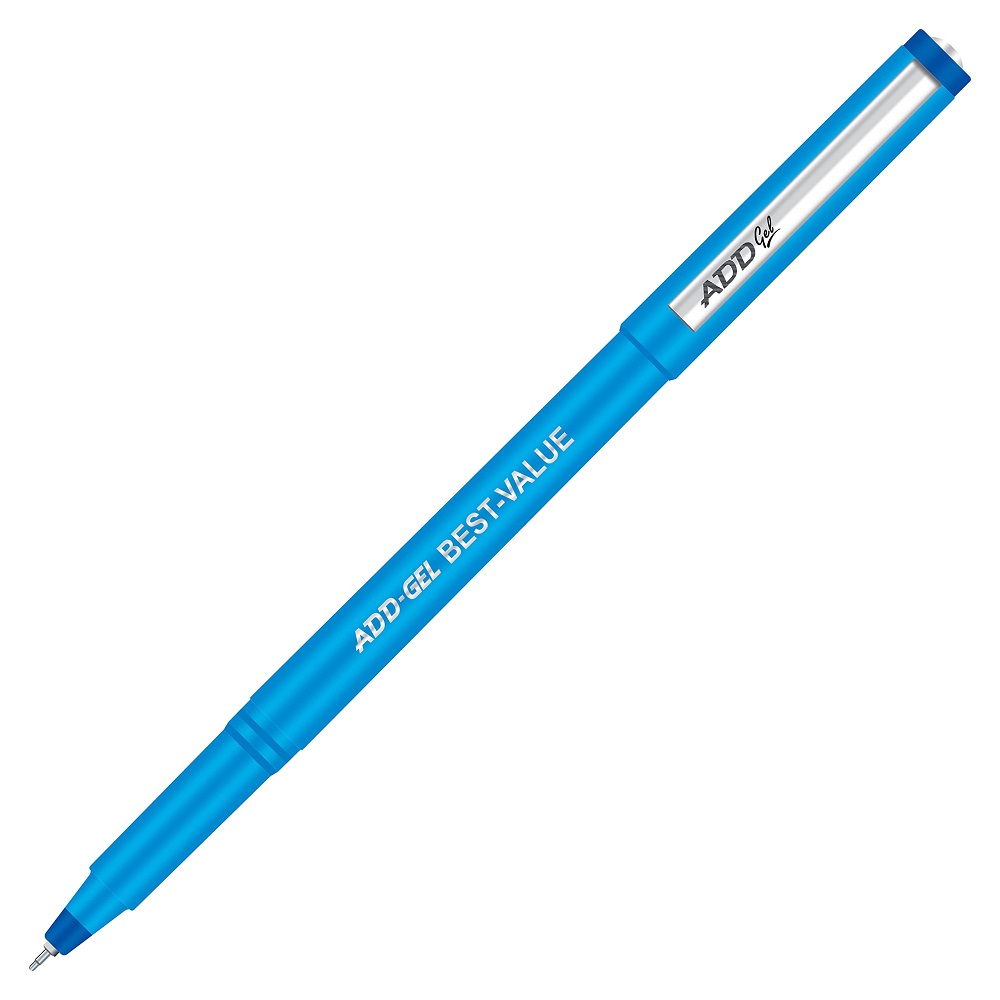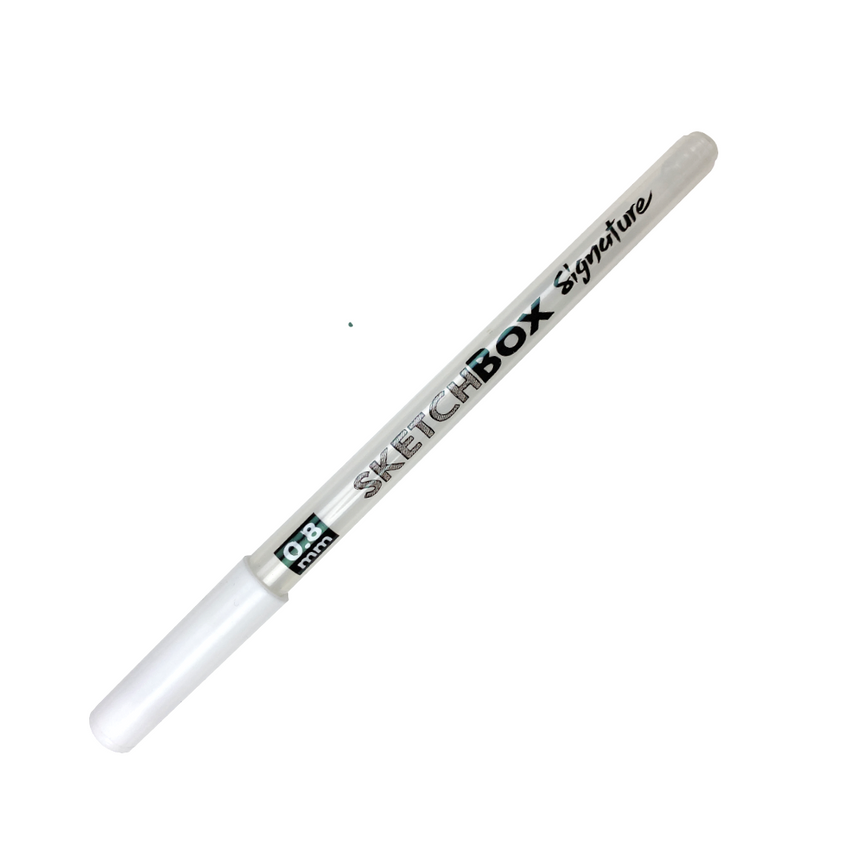Introduction to Gel and Ballpoint Pens
Choosing between gel pen and ballpoint pen is not just about preference. It’s about understanding their distinct features. Let’s delve into what sets them apart.
Differences in Composition and Performance
Gel pens use water-based gel ink, rich in color pigments. This allows for a smoother glide across paper than ballpoint pens, which use oil-based ink for a thicker line. Ballpoints are known for their long-lasting write, while gel pen excel in providing vibrant and precise lines.
Gel ink flows more freely, offering ease of writing with less pressure. On the other hand, ballpoint pens require more force, but their ink dries faster. This reduces the chance of smudging, often making them a practical choice for quick tasks.
Historical Development and Market Evolution
The gel pen made its debut in 1984, thanks to the Sakura Color Products Corporation from Japan. Rapidly, it gained popularity for bright colors aligning with the vibrant ’80s. Meanwhile, ballpoint pens have been the reliable writing tool since the late 19th century, consistently preferred for their durability and convenience.
Over time, manufacturers have enhanced gel pens to dry quicker, thus becoming more user-friendly for lefties. However, ballpoint pens remain the standard for document signing and banking due to their oil-based ink’s resistance to alterations.
The choice between gel and ballpoint pens is not just black and white. Each has its place based on the needs and circumstances of the user.

Understanding Gel Pens
Gel pens stand out for their smooth glide and vibrant ink. Let’s explore why they’re special.
Unique Features and Benefits
Gel pens deliver a writing experience unlike any other. Here are their advantages:
- Vivid Colors: Thanks to water-based gel with color pigments.
- Smooth Writing: Less pressure needed, glides easily on paper.
- Variety of Options: From fine to bold tips for different needs.
- Quick Drying Versions Available: Reducing smudges, suitable for left-hand users.
Gel pens are great for expressive writing and creative endeavors where color and flow matter.
Popular Types and Brands
Some popular gel pen brands include:
- PILOT with its Juice Up and FriXion lines.
- Zebra’s Sarasa series, which offers Rapid Dry Gel Ink Technology.
- The renowned Gelly Roll pens that started the gel pen craze.
These brands have created pens that cater to various writing styles and preferences.
How Gel Pens Work
Gel pens operate on a simple principle:
- A tiny ball in the tip rolls as you write.
- This action picks up ink from the pen’s reservoir.
- The ink then gets transferred smoothly onto paper.
This mechanism makes gel pens reliable for consistent, even ink distribution. The result is clear, vibrant lines every time you jot down a note or create art.

Understanding Ballpoint Pens
Ballpoint pens use oil-based ink, making them different from gel pens.
Core Characteristics
Ballpoint pens have thick, oil-based ink. They are known for their long-lasting write out and fast-drying qualities, which help reduce smudging. The ink is less prone to running out or drying up quickly, making ballpoint pens reliable for everyday use and tasks that require quick, no-fuss writing.
For those who need a pen that can write on various surfaces, including glossy paper or thermal paper, ballpoint pens are often the preferred choice. Their oil-based ink adheres well to different materials and doesn’t skip or smear easily on less absorbent surfaces. They are available in multiple point sizes, with the most common being fine and medium, allowing for versatility in writing styles.
Comparisons in Durability and Usage
When comparing durability, ballpoint pens often come out ahead due to their robust design and the oil-based ink’s resistance to elements like water and time. This makes them a go-to for signing documents or filling out paperwork that needs to withstand wear and tear.
In usage, ballpoint pens require more writing pressure, which can lead to faster hand fatigue than when using a gel pen. However, their solid performance on almost any type of paper and their ability to quickly dry make them suitable for fast-paced environments such as offices or banks. Plus, for left-handed writers who struggle with smudging, a quick-drying ballpoint can be a better option than a gel pen, especially in scenarios where speed is essential.
Key Considerations for Choosing Between Gel and Ballpoint
When deciding between gel and ballpoint pens, consider these key factors:
Writing Smoothness and Clarity
Gel pens glide smoothly on paper, requiring less pressure from your hand. This provides a more comfortable writing experience. Their ink also offers sharp and clear lines, making them ideal for tasks that demand neat handwriting.
Quick Drying and Smudge Resistance
Ballpoint pens are better for quick drying, hence reducing smudges. This is especially useful for left-handed writers who may drag their hand over fresh ink. Some gel pens now dry faster too, but ballpoints generally win in smudge resistance.
Color Vibrancy and Variety
If you need a pen for creative projects, gel pens provide a more vivid and varied palette. Their water-based gel ink comes in many bold and bright colors. Ballpoints have fewer color options but are reliable for standard writing needs.

Usage Scenarios for Gel and Ballpoint Pens
Choosing the right pen matters, especially in various writing contexts.
Best Practices for Professional and Creative Writing
For professional tasks like document signing or quick note-taking, ballpoint pens are ideal due to their quick-drying ink and less smudging. Creative projects, on the other hand, benefit from gel pens because they provide vibrant colors and a smooth flow, making expressive writing and detailed artistry more engaging and visually striking.
Recommendations for Daily Use and Specific Activities
For everyday writing, gel pens are excellent as they require less pressure, reducing hand fatigue over extended periods. They are also perfect for journaling or decorating pages with vivid hues. Ballpoint pens are better for quick errands like grocery lists or workshop notes, as they write well on more surfaces and are less likely to smudge. When choosing a pen for education or professional environments, where writing speed and legibility are paramount, the quick-drying nature of ballpoint pens offers an advantage, particularly for left-handers who may struggle with smudging.
Conclusion
Drawing to a close, we’ve explored the diverse realms of gel and ballpoint pens. Each has its unique strengths and caters to different preferences and needs. Whether it’s the fluidity and vividness of gel pens or the reliability and quick-drying nature of ballpoints, the choice lies in the task at hand and the writer’s habits.
Summarizing Key Differences
Gel pen boast water-based inks with bright, pigment-rich colors, offering a smooth and easy writing experience. Ballpoints, featuring oil-based ink, excel in fast drying and enduring over time, making them a steadfast option for everyday writing and formal documents.
Gel pens come alive in creative spaces, with a spectrum of colors for artistic expression. Ballpoints stand their ground in professional settings, where quick, no-smear writing is essential. Both pens have evolved, with gel pens now offering quicker drying times and ballpoints becoming more comfortable to use.
Final Recommendations for Pen Selection
Opt for gel pen if you’re after vibrant colors and fluid writing for journaling, art, or expressive tasks. Choose ballpoint pens for tasks requiring quick, durable writing, like note-taking or document signing, especially important for those who write fast or left-handed.
Ultimately, your pen choice should align with your writing style, comfort needs, and the specific requirements of your work. Having both types on hand ensures you’re equipped for any writing situation that comes your way.
